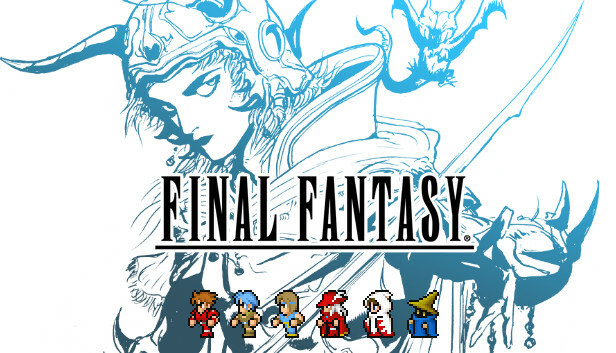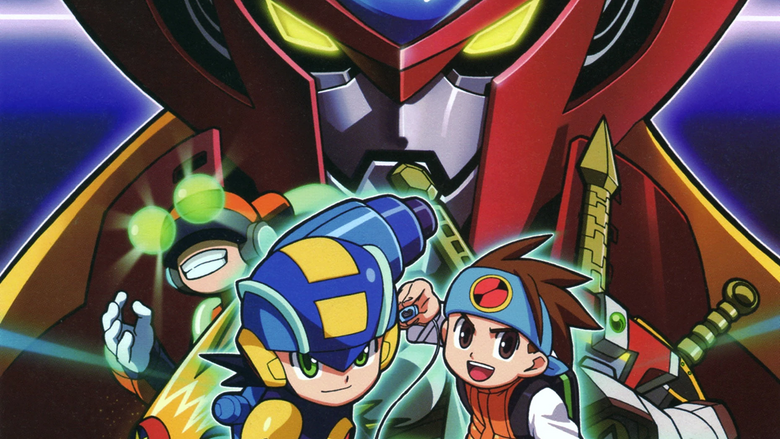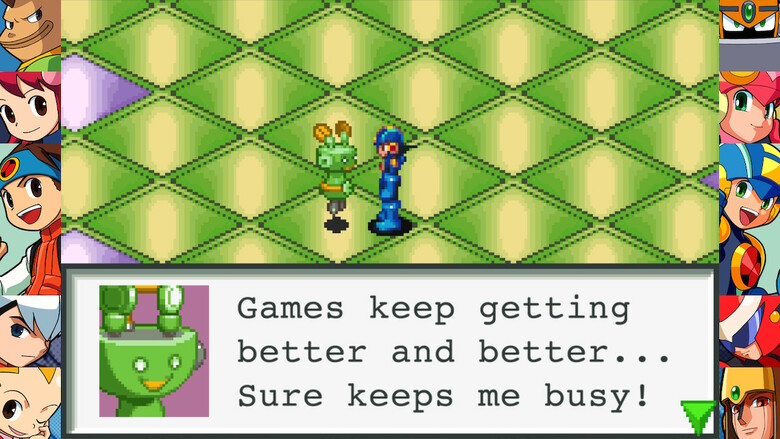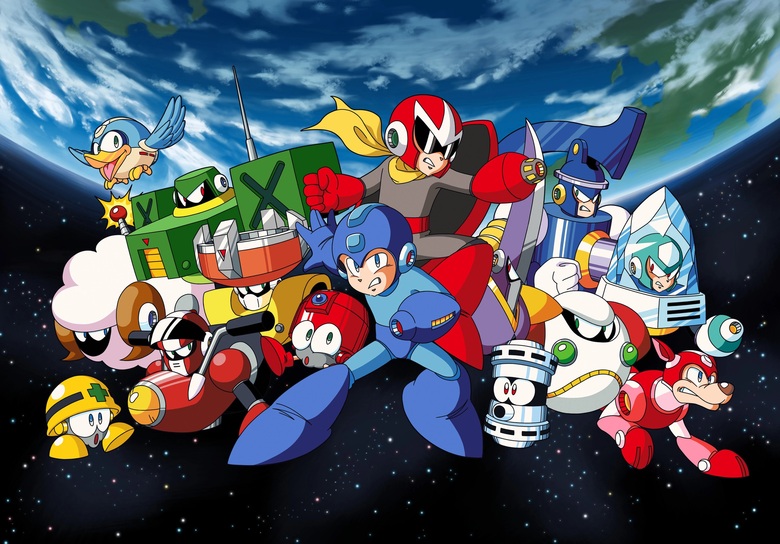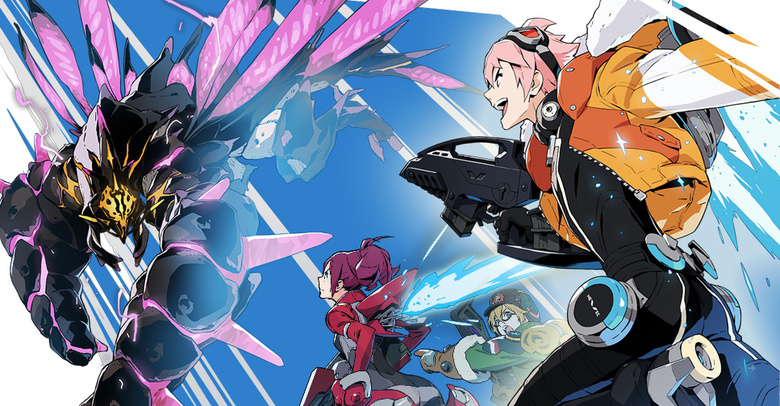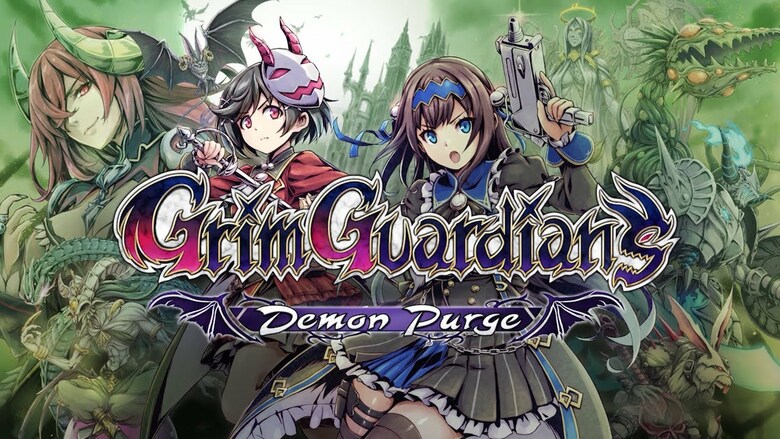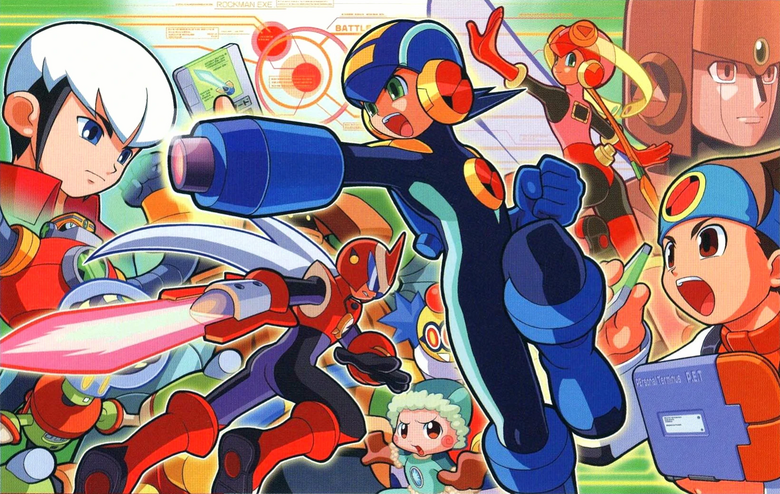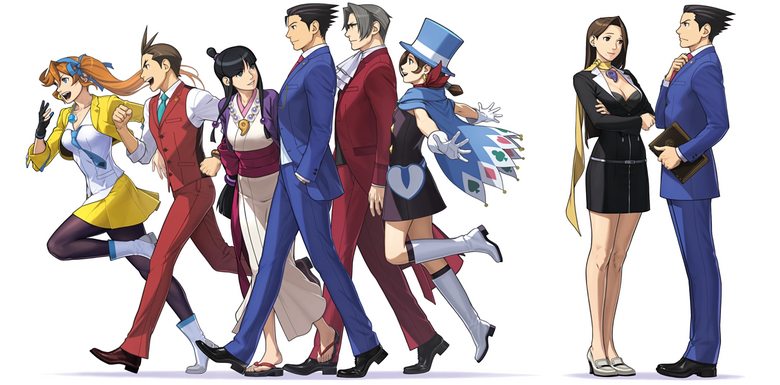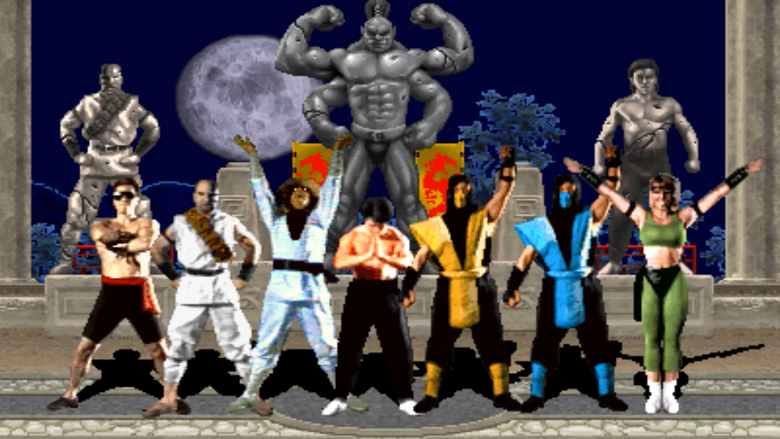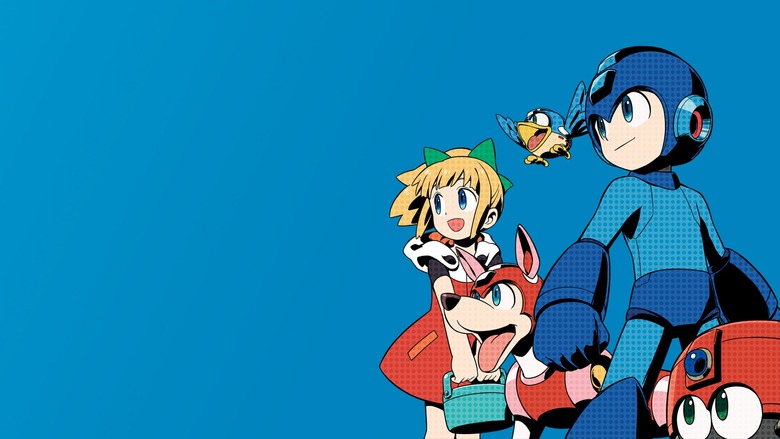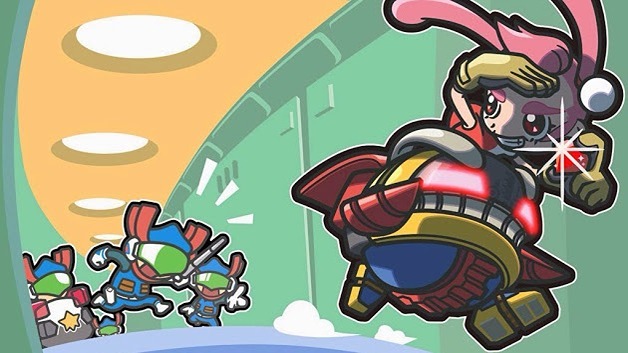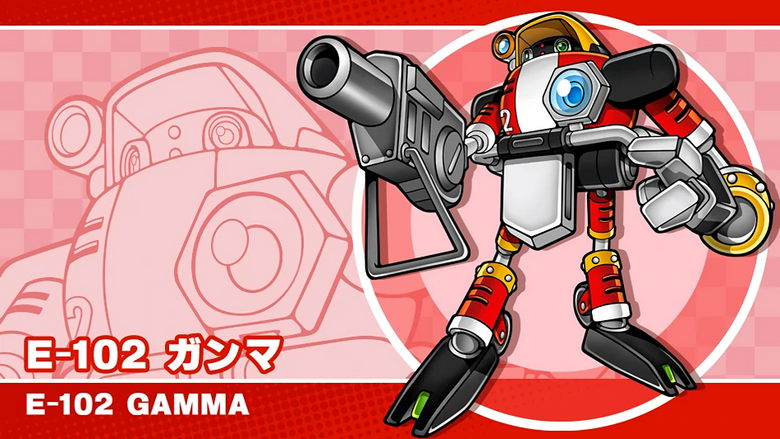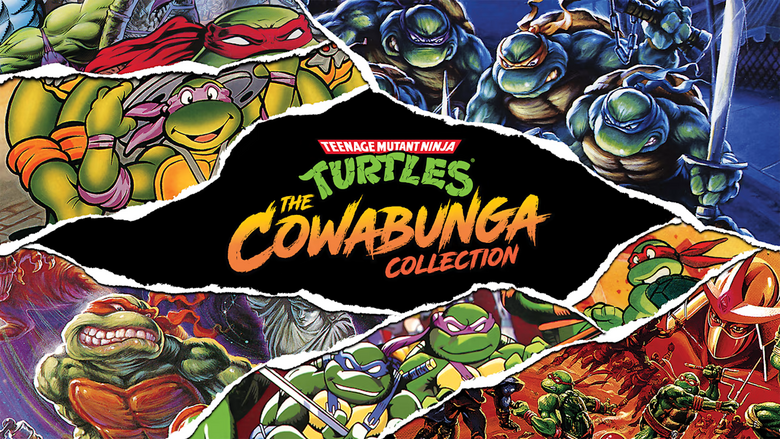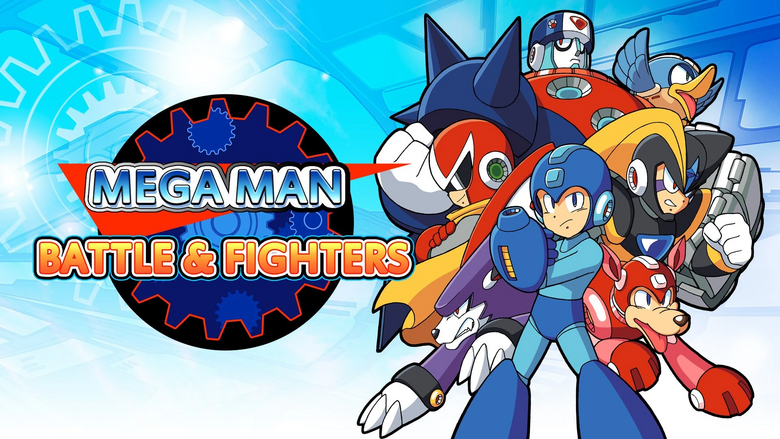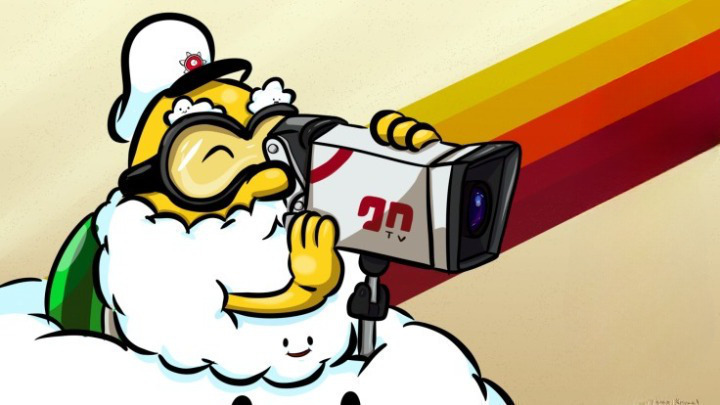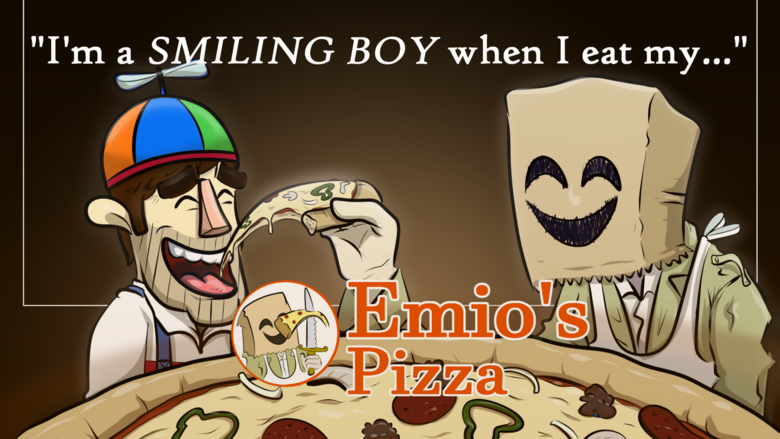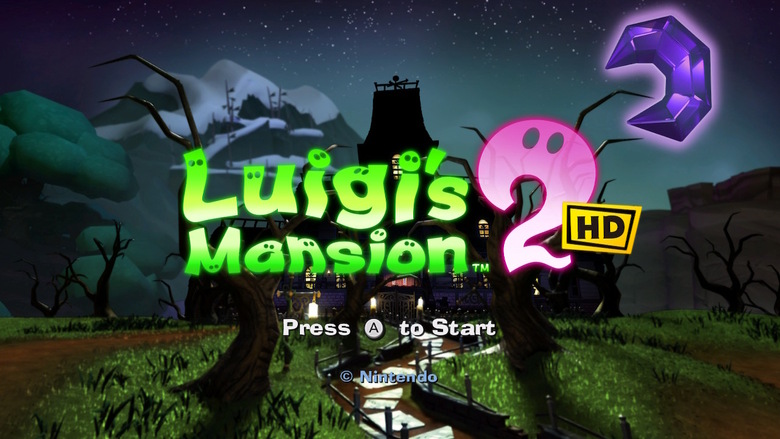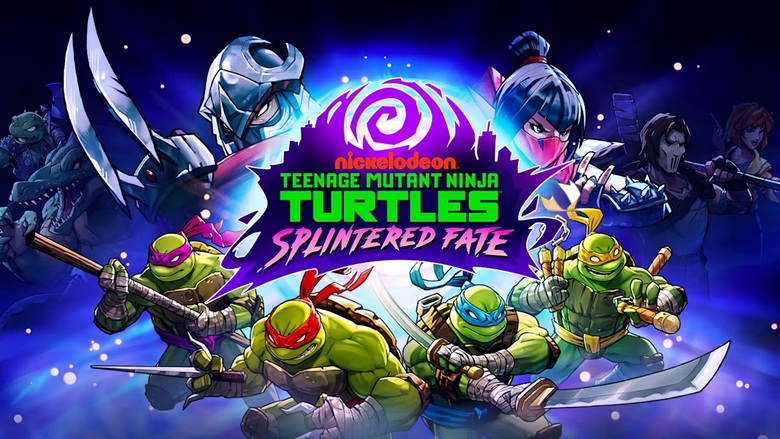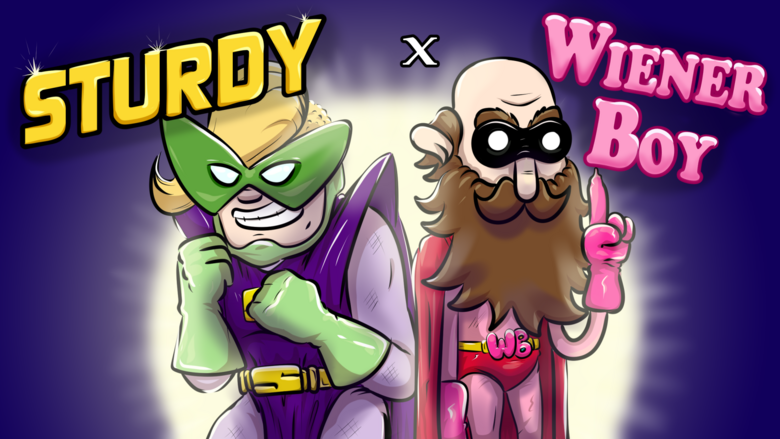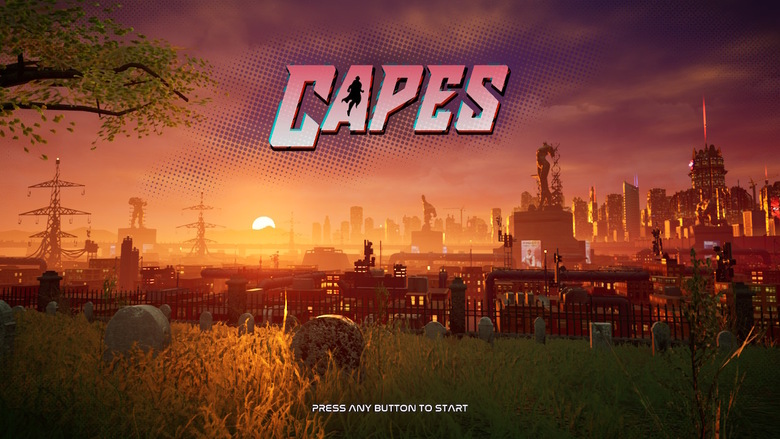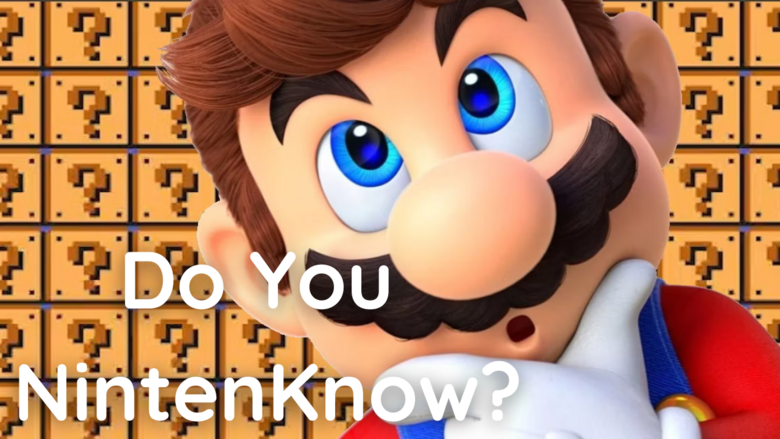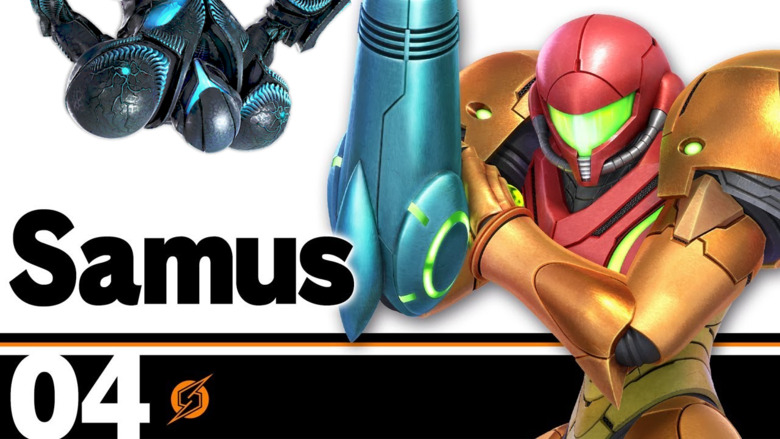Results Get!
REVIEW: Final Fantasy Endures Due to Harsh Reality
I like swords
Note: This review can be applied to every version of Final Fantasy, but is based primarily on the Pixel Remaster version. If you want my perspective on the Pixel Remaster specifically, you can find it in its own section further below!
Final Fantasy can be anything, yet not everything can be Final Fantasy. Series creator Hironobu Sakaguchi once advised that a game can be Final Fantasy “if it has a blue window with text in it.” Unlike many other video game franchises, there aren’t any truly unambiguous characteristics that one can point towards to define a Final Fantasy game. As far as ambiguous characteristics go, I believe a sense of urgent passion to be the key ingredient.
You can make all the jokes you want about Final Fantasy never being “final,” but the title reflects the mindset that created it rather than it being a literal statement. Mr. Sakaguchi famously began Final Fantasy with the intent that it would be his last video game project before calling it quits in the video game business. Final Fantasy originated with the kind of passion that one would put into their final project. With that in mind, it’s no wonder that after so many entries, Final Fantasy continues to endure.
The mindset behind Final Fantasy speaks to me. Not to be a downer, but no one really knows how much time they have in life. While we shouldn’t live in fear that each moment will be our last, it makes sense to put our all into the projects we currently have in front of us. The pressure of our finite existence turns the stones we cast out into the world into diamonds…ideally, anyway. That kind of pressure also explains why each Final Fantasy gets filled so thoroughly with ideas that each can stand alone in its own universe. Urgency brings out the best in Final Fantasy’s eclectic nature, with each entry having its own special charms that stand on their own and are worthy of respect.
I respect the original Final Fantasy for its adherence to harsh reality. I don’t mean that in the sense that it’s a realistic game, but rather that it contains hints of reality that color the otherwise fantastical nature of the game. Final Fantasy conveys its sense of reality through how its gameplay mechanics portray a sense of adventure.
Mega Man Network Transmission Links Battle Network to Its Roots - Mega Man Monthly
There are Zero Viruses here!
Welcome to the April edition of Mega Man Monthly. If you’re familiar with the expression “April showers bring May flowers,” you can consider this month to be my attempt to drown you in a torrent of Battle Network. It’s a big month for the series, after all. Between my frankly way too long review of the Battle Network Legacy Collection and this article, I’m leaving little opportunity to breathe. As for what May flowers this barrage of Battle Network will bring…who knows! I don’t figure these things out that far in advance!
Battle Network marked a major departure from what Mega Man was traditionally understood to be. Prior deviations like Mega Man X or Mega Man Legends brought their own changes, yet walked paths that could still easily be traced back to the franchise’s starting point. Unlike other Mega Mans, Battle Network stands far enough apart from its predecessors that it can be considered its own distinct entity. Within that distance Battle Network created, however, lies an opportunity for a clearer connection. Mega Man Network Transmission bridges the gap, linking Battle Network to its platforming heritage. The link that Network Transmission establishes reveals that in many ways, these disparate directions for the Mega Man franchise aren’t as estranged as it seems.
REVIEW: Mega Man Battle Network Legacy Collection Connects Past and Future
A Battle Chip off the old block
As a ten year old, two things shaped me into the person I am today: Mega Man and the internet. That explains a lot, I’m sure. Admittedly, there were probably some other things that helped too. At the very least, both of these two things factor heavily into why I’m writing this review. Mega Man connected me to many of my hobbies, including video games, drawing (more on that at the end!), and even writing. The internet connected me to the wider world of people who share similar interests, providing me an outlet to bounce my ideas off of other people. That includes you, my latest victim, who happens to be reading this right now.
Mega Man Battle Network Legacy Collection encapsulates the importance of connections; the kinds of connections that Mega Man creates and the ones that the internet creates. Collections inherently force people to look backwards, and the Battle Network games are fascinating time capsules. This series holds a unique position in the Mega Man dynasty as its most potent push for relevance. It moved Mega Man into trendier roleplaying and card game territory while updating the premise of the series to reflect modern day reality. These games were released just as the internet began fully integrating itself into everyday life, and as a result they evolved in tandem with our own real life internet.
Battle Network holds particular significance to me because it represents and is a product of the world that I grew up in. I may favor some individual Mega Man games more than the Battle Network series, but I view Battle Network as “my” Mega Man nonetheless. Battle Network extrapolated and dramatized many aspects of how the internet would grow, of course, but it also captured the broader sense of wonder that the internet invoked within me. In a way, Mega Man and the internet truly collaborated in forming how I saw this new era of society emerge. Battle Network explored this change not only through its narrative premise, but also its gameplay ideas and multiplayer focus.
You don’t need to have grown up in the same timeframe I did to appreciate these games, but these games do lean on that context nonetheless. The burgeoning sense of discovery the internet unleashed, in addition to the unique connections it produced, form key aspects of Battle Network’s identity. If you remove that context from the equation, these games likely would have turned out very differently. When you do a collection of games like these, then, ideally it should preserve not only the games themselves, but also the context and connections they aimed to convey.
Let’s start with how this Legacy Collection treats the games.
Mega Man 10 Brings the Series Beyond Full Circle - Mega Man Monthly
Get Equipped With Full Circle
Welcome to the March edition of Mega Man Monthly! I don’t know about you, but this month threw up plenty of roadblocks for me. I suppose that as the name implies, you can only march forward regardless. Consider this, though: if you march forward long enough in the same direction, you will eventually end up exactly where you started. Some mildly Mega Man-related philosophical thought for you!
By its very nature, Mega Man 10 risks being overshadowed. Mega Man 9 returned the series to its retro aesthetics, and Mega Man 11 pushed it towards the future with modern technology. Since Mega Man 10 simply continues Mega Man 9’s retro direction, it falls between 9 and 11 in more ways than one. Although Mega Man 10 lacks an obvious distinguishing premise, it accomplishes more than it may seem at first glance. Mega Man 10 not only brings the Mega Man series full circle, it brings it beyond that circle.
In order to bring something beyond full circle, you must first close the circle. Luckily, Mega Man 10 exudes an air of finality. It owes that sensation in part due to the context of its release. While the idea may seem quaint in retrospect, there was a period of about seven years where Mega Man 10 held the title of the last real Mega Man game with no clear future in sight. No, I don’t count any Xovers, Street Fighter or otherwise. Mega Man 10, at least temporarily, closed the book on Mega Man as we know it. While I don’t believe that it was ever intended to be a permanent end for Mega Man, we know that at the time of its release Capcom intended to release more games in the series, it fits the bill of the “final” Mega Man game well.
Metroid Fusion Morphs Normalcy Into the Enemy
Something's off about this one
Metroid Fusion morphs Metroid into something subtly different. Unlike the X Parasites, it doesn’t give the series cold, dead eyes so much as it drags the series out of its comfort zone. What makes a Metroid game “Metroid,” has almost been codified, like they are all the same game and need to follow all of the same rules. Fusion demonstrates the malleability of the Metroid formula better than perhaps any other entry. It takes many of what people consider to be Metroid’s greatest strengths, what makes a Metroid “normal,” and twists them into something sinister.
From the moment the game begins, Fusion assaults your expectations. I don’t just mean that for existing Metroid fans, either. It worked on me as a child, and Fusion was the first Metroid game I had ever played. Metroid was of course my favorite character in Super Smash Bros., so I was at least familiar with him there.
Fusion’s opening shocked me by depicting what is essentially a near-death experience for the protagonist. Metroid’s initial encounter with the X Parasites dramatically alters him both inside and out. He unwillingly discards his iconic orange Super Smash Bros. suit for a much wilder blue and yellow palette. He loses his abilities. He gains weaknesses he didn’t have before. The Metroid you thought you knew, however briefly you knew him, is no more.
By immediately throwing you into such a dramatic situation, Fusion knocks the player off-balance. It sets the expectation that Metroid is out of his element and things aren’t the same this time around. The enemies in this game are powerful and Metroid is weak. Sure, this event ultimately boils down to a narrative device that justifies resetting the character so that you can build him back up over the course of the game, but it’s an impactful one. It not only messes with Metroid himself, it messes with your perception of the game.
Don’t worry, I’m also just messing with you. I know Metroid is a girl.
The Mega Man Legend of E.X. Troopers - Mega Man Monthly
Despite everything, I still don’t know what E.X. stands for
Welcome to Lost Pla- I mean, Mega Man Monthly! Hopefully February is treating you well. As I write this, I’m currently buried under a mountain of snow and ice, so this month I’m dragging you down with me to the snowy depths of E.X. Troopers. Huh? What about “Mega Man”? I don’t know who that is.
E.X. Troopers and Mega Man share an odd history, tied together more by circumstance than any overt facts. To this day I often hear people say that E.X. Troopers is the closest thing we’ll ever get to a Mega Man Legends 3. I actually imported the game from Japan just over a decade ago based on that very premise. It’s a bit of an urban myth, or perhaps legend, that Legends 3 found new life in E.X. Troopers. You can’t always rely on legends, though, so today we’ll investigate this matter from every angle to uncover the truth lurking behind E.X. Trooper’s snowy exterior.
You may be unfamiliar with this particular legend if you don’t obsess over games that were canceled over a decade ago like I do. Capcom announced Mega Man Legends 3 under the premise that fans would provide direct input on the game as it was being developed. It was never overly clear what the concrete plan of release was for this game beyond fans helping out with it and the initial release of a “prototype” that would serve as a prologue. Following the announcement, the game’s director Masakazu Eguchi stated that the game was never actually greenlit in the first place and its cancellation was a very real possibility.
Long story short, things didn’t work out and Capcom posted an official message confirming the project’s cancellation on July 18th, 2011. Whether it was canceled due to bad blood between Capcom and then Mega Man dungeon master Keiji Inafune who had recently departed from the company, because it was a sequel to a niche game announced for a device that fumbled out of the gate, or because fans simply didn’t care enough doesn’t really matter. Drama occurred, Legends 3 died, the seemingly completed prototype never released, and that’s the end of the story…or is it?
The legend of E.X. Troopers goes that in the wake of Mega Man Legends 3’s legendary cancellation, Legends 3 actually went into Witness Protection and changed its identity. Legends 3 would now go by the name of E.X. Troopers, a spin-off to the Lost Planet franchise. This new game would essentially be built off the scraps of Legends 3 that were completed, reusing the existing engine, mechanics, and even some design assets. It’s Legends 3 in all but name, or so the internet tells me.
Now that the groundwork has been laid, we can irresponsibly rush headlong into conspiracy theories.
REVIEW: Grim Guardians: Demon Purge - More Than a Skin Deep Affair
Gal Gunning for Demons
This isn’t what it looks like! Or maybe it is, it’s hard to say what exactly this looks like. Grim Guardians: Demon Purge looks like Castlevania. Its characters look like they are from Gal Gun (because they are). Looks rarely tell the full story, however, especially at first glance. Grim Guardians deserves a look beyond the surface, as its exploration of its source material is more than skin deep.
First and foremost, Grim Guardians obviously evokes Castlevania. While it certainly looks the part, it also captures what distinguishes Castlevania from its platforming contemporaries. In many platformers, levels primarily emphasize jumping from one platform to the next. You know, platforming. Enemies simply hinder your ability to do that successfully, like a heckler swooping in from backstage to distract from the main event. In a Castlevania game, platforming and enemies switch roles – enemies take center stage while the platforming spices up the battles
Although you may not literally be platforming, many of the same principles in spacing and timing still apply. Enemies take multiple hits, which prolongs battles and encourages mastery of their tricks. You need to move in specific ways and time your hits carefully, lest you get knocked into a conveniently placed bottomless pit. Pits and spikes generally exist more to punish you for making a combat mistake than jumping incorrectly. Castlevania games will often throw you into completely horizontal hallways without any real platforming at all because of this enemy-first design focus. This distinguishing characteristic likely led to Castlevania’s relatively seamless transition from a stage-based deathmarch to an exploratory game that deemphasizes your platforming prowess.
Battle of the Networks: Comparing Mega Man’s Internet to Our Own - Mega Man Monthly
...Talking about Mega Man is my forte!
Welcome to Mega Man Monthly! I have about ten million things to say about Mega Man and considerably less days to write them all down. My only hope lies in a monthly schedule, so every month I’ll tackle some new idea I had about Mega Man. I plan to cover everything ranging from individual games, entire series, broader concepts, and even things that seemingly have little to do with the Mega Man games at all. It’ll be a surprise!
The Internet: vast, unknowable, kind of a pain in the neck. More importantly, it’s an everyday part of life – you’re probably using it to read this right now. Things weren’t always like this. The Mega Man Battle Network series serves as both an interesting time capsule of the internet that was as well as an indicator of its future. That makes it an interesting point of comparison to how the internet has developed over time.
Battle Network games released at a time where the internet was rising in prominence yet had not yet fully formed. It’s easy to say, then, that Battle Network predicted the future. A world where the internet ties into everything around us? Who would have thought! Something even the developers of the games admit, however, is that pretty much everyone had similar ideas of where things were headed. The world of Battle Network existed within our reach. That made the series appealing as a concept.
With something like Pokemon, you inherently have to remove yourself from reality a little to insert yourself into the situation. Unfortunately, Charmanders aren’t real. At least not yet. We may have some fascinatingly screwed up genetics experiments waiting in our future. With Battle Network, you could see yourself having something like a Mega Man in your pocket with considerably less ethical lines crossed.
Phoenix Wright Represents an Ideal to Strive For
Turnabout Thanksgiving
I owe a lot to Phoenix Wright. If I hadn’t played Ace Attorney when I did, it’s very possible my life would have gone in a totally different direction. I can’t give Ace Attorney full credit for my decision to become a lawyer, yet it undeniably sparked an interest that led me down that path. Ace Attorney, and the character of Phoenix Wright specifically, turned the idea of practicing law from some foreign concept into an exciting prospect for the future. Investigating cases, uncovering lies, calling parrots as witnesses…it seemed like a good fit for me – or maybe to be more accurate, the person I wanted to be. Experiencing Phoenix’s trials inspired me to dig deeper into what lawyering was like in real life and pushed me to become the person I am now.
I’m a few years into the real thing at this point, so what Ace Attorney meant to me back then differs from what it means to me now. It probably goes without saying that Ace Attorney takes some liberties with the lawyering experience. Hearing testimony from animals occurs less often than I was led to believe. You’re not supposed to slam the tables, either. Still, even after reaching the destination that Phoenix Wright pointed me towards, I continue to draw inspiration from his games. Rather than seeing Phoenix Wright as an occupational goal, he now represents an ideal: one that no matter how much the legal system hurts or frustrates me, is one worth striving for.
Practicing law can be painful. Legal systems ground themselves in laws, theoretically objective measures that when applied properly to a situation, should get you the “correct” result. Unfortunately, it doesn’t always work out that way.
Mystery is Mortal Kombat's Lifeblood
Read this or I will perform a Babality on myself and cry
Blood. Gore. Fatalities. Ratings Boards. Whatever. You’ve heard all of that stuff about Mortal Kombat before. Everyone knows how important death is to Mortal Kombat, but to me, Mortal Kombat is just as much about life as it is death. The Mortal Kombat games were among the first to convince me that a world lived within the cartridge of the game. That world crossed beyond the fictional story, beyond the game mechanics, and into reality itself. Mortal Kombat’s world lives on to this day. You can’t kill Mortal Kombat, it’s immortal, so let’s dive into what I believe to be the source of its immortality: mystery.
Mortal Kombat integrates mystery into every aspect of itself, and I’m not just talking about its reputation for secrets. The story is mysterious, the characters are mysterious, the backgrounds are mysterious, even aspects of simply playing the game are mysterious. The many mysteries of the games creates a version of Mortal Kombat that lives within everyone that plays it. You can’t get much more immortal than that.
Mega Man 9 Vs Mega Man 11: Fight for the Future!
Did you know Rockman games have subtitles? Check 'em out!
Although the immediate future of Mega Man will one day be revealed (well probably, right?), the question of what the next Mega Man game should be will perpetually linger. This question will always rely on context: long-running series are shaped by their past just as much as the present market landscape. Each prior game helps shape what the next game could be. That’s why today, I’m taking a look at the two Mega Man games that I believe demonstrate this idea the most clearly: Mega Man 9 and Mega Man 11. Both games spawned from the context they were created in, and despite their base similarities, they arrived at almost opposite results by every other metric. By comparing the different paths they took, we can glean what makes Mega Man special as a platformer and what is important to carry into the future.
I love both games I’m discussing today. This is less of a no-holds-barred deathmatch and more of a respectful Gentle Man’s (distinct from gentlemen) duel that highlights how the games differ and the strengths of each. My apologies to anyone expecting blood and circuits here.
With that said, let’s talk about context a bit more. The common question that arises with any new game in a long running series is “how can we differentiate this one from the rest?” Mega Man has answered this concern with dramatic changes in the form of subseries that move in to different genres, as well as with more incremental solutions found in the more traditional platformers. Even if the changes are small, however, when made over a long period of time, they eventually add up. That buildup creates a lot of historical context, which guided both of today’s subjects towards their respective destinations.
Drill Dozer Builds As Much As It Destroys
Here's the drill
Drills make holes in things. I extensively researched drills in order to come to this conclusion and am now an expert on the subject. Today, however, I will defy all laws of science and observable reality by proposing a new theory: drills can build things, too, particularly in Drill Dozer. True to its title, Drill Dozer burrows deep into the art of drilling, tying it directly into virtually every aspect of its game design. This approach results in several creative mechanics that thoroughly explore what it means to drill. While that involves plenty of demolition, Drill Dozer is particularly notable for how it uses its tool of destruction to build.
The biggest thing Drill Dozer builds is momentum. I mean that in a pacing sense, but momentum is also important for real-life drilling. Spinning a drill around involves angular momentum that can then be used to create the force needed to break things apart. Just like a real drill, momentum is key in Drill Dozer.
Opening Sonic Adventure’s Mechanical Heart
Get a load of this!
A quick note for this feature: normally when I write an article “celebrating” a game, I try to keep any actual plot developments vague. I see Sonic Adventure as a game primarily about its different characters and their arcs, however, and so I feel the best way to talk about it would be to go in-depth with one of those arcs. That being the case, the latter half of this article contains spoilers for a relatively small part of a 20+ year old game. If you haven’t played Sonic Adventure before, you should! It’s cool!
Sonic means a lot of things to a lot of people. His creators crafted him to have meaning from the outset; he had to embody universal values as a mascot, he had to express “coolness,” and his actions carry a message of environmentalism. What Sonic means to any one individual, however, likely varies based on the Sonic experience that impacted them the most.
For me, defining the “Sonic experience” isn’t just about Sonic. No game demonstrates that better than Sonic Adventure, which gives you glimpses into the lives of Sonic’s extended cast that in their own ways, explore what Sonic as a series is all about. E-102 Gamma’s episode reflects the Sonic experience in unconventional yet meaningful ways. Gamma holds the key to unlocking the hearts of both Sonic Adventure and the Sonic series itself.
REVIEW: Teenage Mutant Ninja Turtles: The Cowabunga Collection - A Museum of Mutations
I bet you can guess my favorite turtle from the screenshots
Don’t be shell-shocked: since I’m writing a review on a collection, I figure I need to one-up it by writing my own collection. To that end, I’ll start by covering the collection itself and then move onto sharing thoughts on some select games within it. Be careful not to stub your toe or fall into a manhole while moving from essay to essay!
A Museum of Mutations - The Cowabunga Collection (Switch)
The most consistent trait of the Teenage Mutant Ninja Turtles is their inconsistency. Whether you want to call them mutations or adaptations, as the Turtles hop from comics to cartoons to movies to games, you’re rarely seeing the same exact Turtles as the last time you saw them. Makes sense – each new project involves different creative teams, so you’re bound to end up with differences in interpretations. Few properties benefit from this process quite like the TMNT, however. There’s something about TMNT’s chain of interpretations that have continually built them up into an enduring mainstay of culture. That’s particularly true for their presence in video games.
Teenage Mutant Ninja Turtles: The Cowabunga Collection collects all the instrumental moments that would go onto define the TMNT in video games. To be more specific, it contains the entire initial run of Konami-developed TMNT games from the 1980s and 90s – every game and every version of those games. Kevin Eastman and Peter Laird may have created the property and the cartoon may have launched it into mainstream recognizability, but the developers at Konami played their own pivotal role in defining (or at least mutating) the characters.
REVIEW: Mega Man Battle & Fighters Retrofits Legacy
I can't stop writing this game's title as "Power & Fighters"
Ports are adaptations, an approximation of another game recreated on different hardware. Porting a game from one hardware to another requires technical solutions as well as artistic ones. Ideally the ported game closely reflects the original experience, but other times significant changes must be made, sometimes to the point that it results in a completely different game altogether.
Exploring the nature of ports now seems particularly appropriate due to the recent Nintendo Switch release of Mega Man Battle & Fighters, which is essentially a faithful port of a port. Battle & Fighters itself blurs the scenarios outlined above together, resulting in something in between faithful and different. It is a testament to the creative deviations made in the porting process and what they can result in. Battle & Fighters adapts games that take advantage of the legacy of Mega Man and retrofits them into something that presents that legacy in a distinct way.
